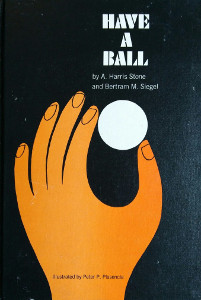Have a Ball
Bertram M. Siegel, A. Harris Stone

Author:
Bertram M. Siegel, A. Harris Stone
Illustrator:
Peter P. Plasencia
Publication:
1969 by Prentice-Hall, Inc.
Genre:
Science
Series:
Science Inquiry Project Series ![]() Members Only (Physics)
Members Only (Physics)
Pages:
63
Current state:
This book has been evaluated and information added. It has not been read and content considerations may not be complete.
Book Guide
Search for this book used on:
Which has the most "bounceability"—a golf ball, a tennis ball, a Ping-Pong ball, or a steel ball? Does a softball reach the ground before a baseball when they are both dropped at the same time? Why does a golf ball have dimples? Why does a tennis ball have fuzz?
By working as a scientist does, you can find out the answers to these and many more questions about balls. Here are fascinating experiments that will help you to discover for yourself why and how balls differ, and what makes each kind of ball act the way it does.
HAVE A BALL provides an entertaining and thought-provoking introduction to many principles of physics. By performing the stimulating experiments in this book, every youngster can "have a ball" while teaching himself scientific methods and concepts.
From the dust jacket
To view an example page please sign in.


